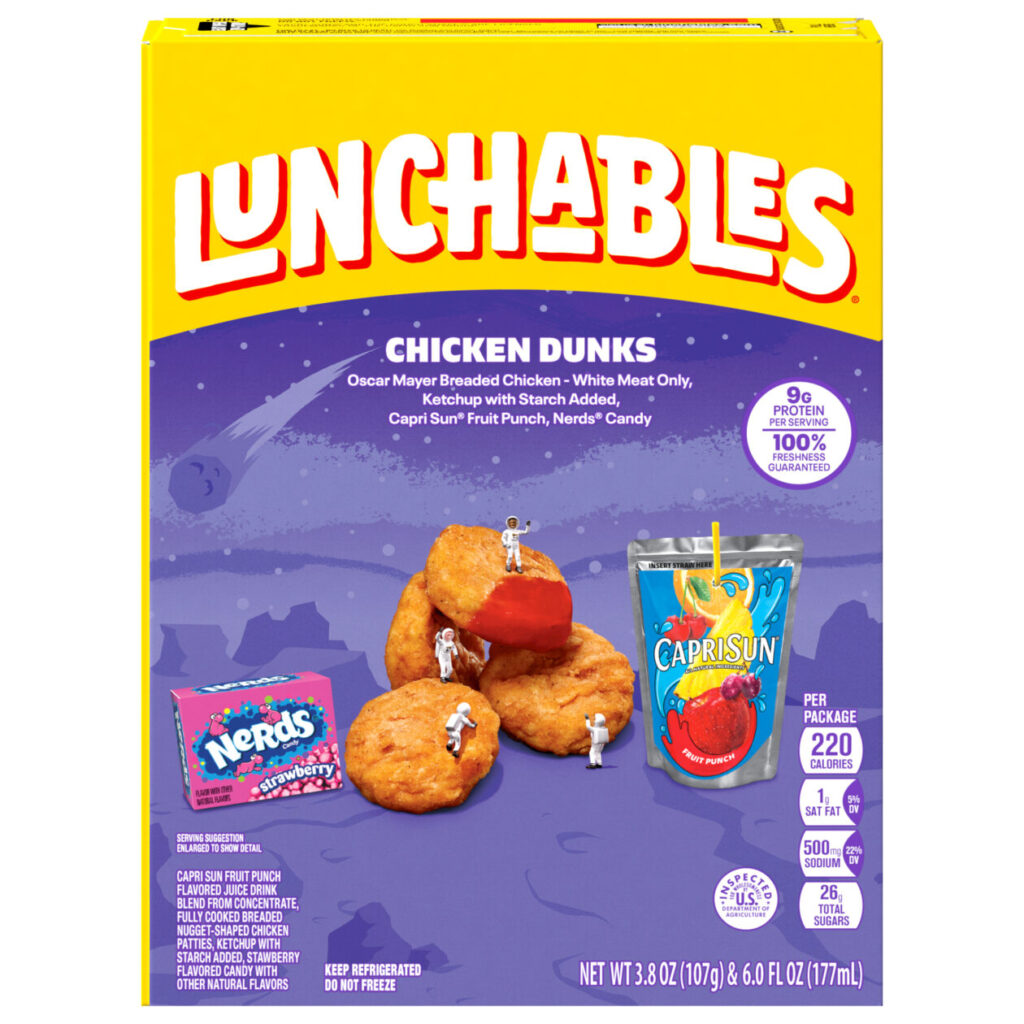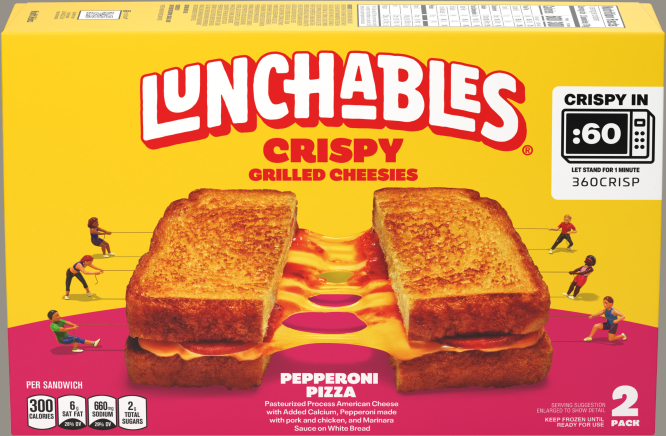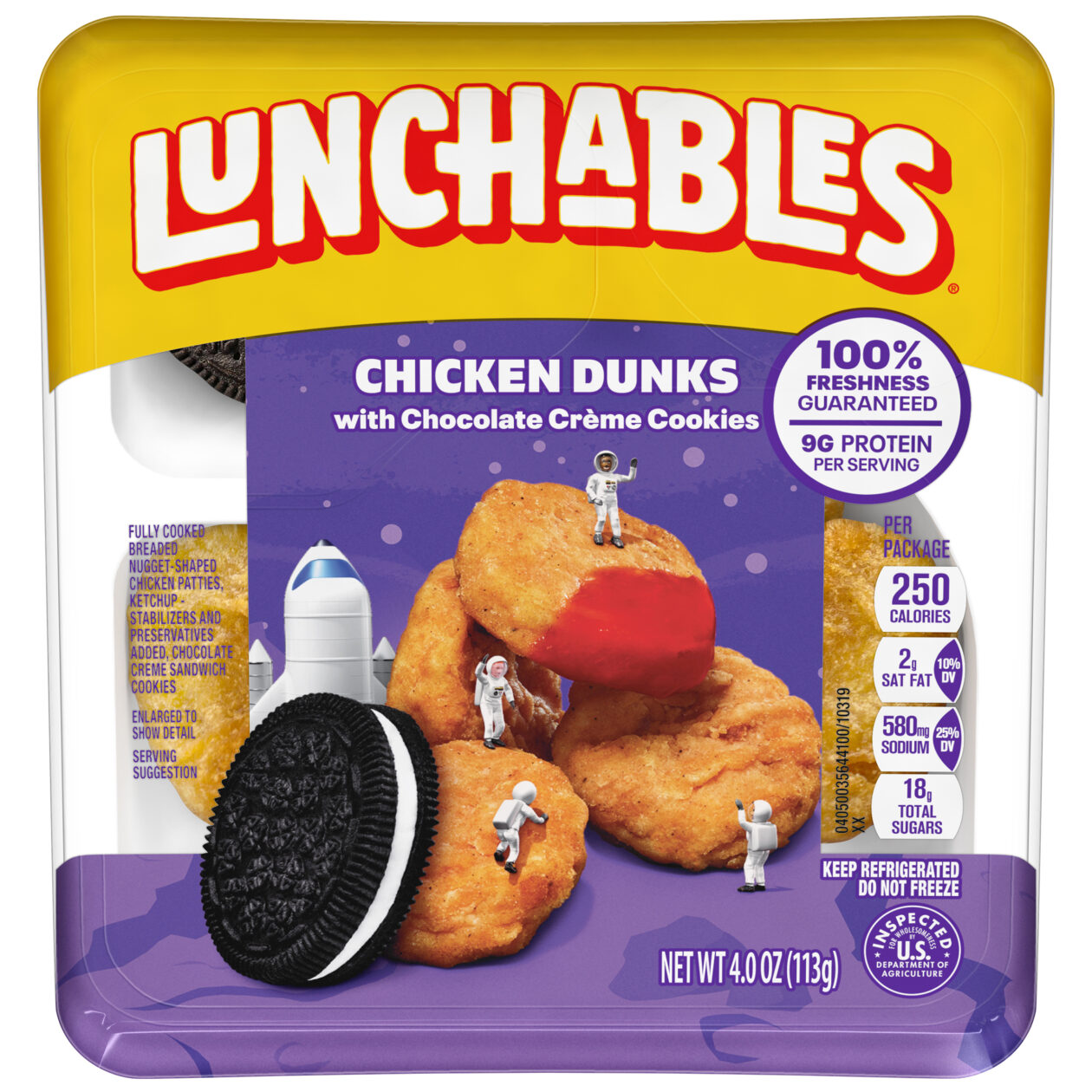Introduction
When it comes to pregnancy diets, expectant mothers meticulously consider every food choice for the well-being of both themselves and their unborn child. Lunchables, a household name since its introduction in 1988, offers a variety of meal combinations, including crackers, pizzas, chicken nuggets, hot dogs, burgers, nachos, subs, and wraps.
As we navigate the realm of pregnancy diets, a common question emerges: Can you eat Lunchables while pregnant? This inquiry stems from pregnant women’s unique considerations regarding food safety, nutritional needs, and overall well-being during this crucial period. To address this question comprehensively, we will explore the nutritional content of Lunchables, the potential risks associated with certain ingredients, and whether they can be a feasible option for pregnant women seeking convenient meal solutions.
The History of Lunchables
Lunchables, conceived in 1985 by visionaries Bob Drane, Christine James, Jeff James, and Deborah Giarusso, marked a revolutionary approach to packed lunches. Introduced nationally in 1989 by Kraft Heinz under the Oscar Mayer brand, Lunchables aimed to simplify the lives of American mothers, especially those pressed for time. The idea was to create a convenient prepackaged lunch featuring Oscar Mayer’s signature lunch meats. Initially introduced in Seattle, Lunchables gained widespread popularity for its innovative approach, substituting traditional sandwiches with crackers to enhance shelf life. Inspired by American TV dinners, the design made it an instant hit among consumers.
Over the years, Lunchables evolved to cater to changing tastes and preferences. The merger of Oscar Mayer with Kraft in 1988 brought Kraft’s cheese into the Lunchables equation, diversifying the product offerings. Lunchables became synonymous with convenience, offering an array of meal combinations, including pizzas, chicken nuggets, hot dogs, burgers, nachos, subs, and wraps. The adaptability to consumer demands showcased Lunchables’ ability to stay relevant and resonate with diverse preferences, making it a staple in many households.
Once limited to a few varieties, Lunchables expanded its product line to encompass 30 different meal combinations. These options include crackers, pizzas, chicken nuggets, small hot dogs, burgers, nachos, subs, and wraps. The brand also introduced adult-targeted versions like “Deluxe” and “Maxed Out,” providing more significant portions. In the UK, the product is sold as “Dairylea Lunchers.” While the variety has slightly decreased in the UK over the years, Lunchables remains a popular choice for quick and hassle-free meals, adapting to the ever-changing landscape of consumer preferences.
Can You Eat Lunchables While Pregnant?

Pregnancy comes with a set of dietary guidelines and restrictions, and one common concern is the risk of listeriosis. Listeria, a bacterium responsible for this foodborne illness, can be found in certain foods, including deli meats and processed snacks. This risk is particularly heightened during pregnancy, as the immune system changes to accommodate the growing baby. While Lunchables, a popular choice for quick and convenient meals, may contain processed meats, the concern lies in the potential exposure to Listeria.
Listeriosis during pregnancy can lead to severe complications such as miscarriage, premature birth, or stillbirth. Therefore, pregnant individuals are often advised to approach processed snacks with caution.
The dietary choices made during pregnancy play a crucial role in ensuring the mother’s and baby’s health and well-being. Expectant mothers are often advised to be vigilant about food safety, avoiding certain items that may pose a higher risk of foodborne illnesses. While Lunchables offer convenience, the key lies in understanding and mitigating potential risks. Cautious eating involves considerations beyond just nutritional content; it extends to the handling and processing of the food. Pregnant individuals are encouraged to opt for freshly prepared meals, ensuring that ingredients are handled and stored appropriately to minimize any risks associated with foodborne pathogens.
Processed snacks, including Lunchables, present a unique set of considerations for pregnant women. The convenience of these prepackaged meals is undeniable, but it comes with the caveat of potential additives and preservatives. Pregnant individuals may be concerned about such snacks’ nutritional value and ingredient quality. While Lunchables offers various options, including crackers, meats, and cheese, expectant mothers must scrutinize the ingredient list. Opting for healthier alternatives or occasionally indulging in Lunchables focusing on safe food handling practices can balance convenience and cautious eating during pregnancy.
So, Are they safe to eat during pregnancy? It is generally advisable for pregnant women to avoid Lunchables, as they often contain deli meats that pose a risk of Listeria. Listeria infection during pregnancy can have serious consequences. It’s recommended to prioritize safer, pregnancy-friendly food options.
Nutritional Analysis: A Closer Look at Pizza Lunchables


Nutrition Facts
- Serving Size2 Sandwiches (176g)
- Amount per serving
- Calories600
- % Daily Value*
- Total Fat35 g48.61%
- Saturated Fat11 g55%
- Trans Fat0 g
- Cholesterol55 mg18.33%
- Sodium1330 mg57.83%
- Total Carbohydrate50 g18.18%
- Dietary Fiber0 g0%
- Total Sugars40 g
- Added Sugars3 g6%
- Protein19 g38%
- Vitamin D (Cholecalciferol)0 mcg0%
- Calcium410 mg31.54%
- Iron3 mg16.67%
- Potassium230 mg4.89%
A. Breaking Down the Nutritional Content Per Serving
When considering the nutritional aspect of Pizza Lunchables, it’s essential to delve into the specifics. One serving typically consists of two sandwiches, offering a convenient yet calorie-dense option. Each serving provides 600 calories, with 35g of total fat and 11g of saturated fat. Cholesterol levels stand at 55mg, and the sodium content is at 1330mg. Carbohydrates weigh in at 50g, with 3g of added sugars, and the protein content is 19g. Understanding these values is crucial for making informed dietary choices, especially during pregnancy.
- Calories, Fat, and Saturated Fat
Caloric intake is a significant consideration during pregnancy, where nutritional needs increase but must be balanced. The 600 calories in a serving may contribute substantially to daily requirements. However, the 35g of total fat, including 11g of saturated fat, raises concerns. While some fat is necessary, pregnant individuals are advised to prioritize sources of healthy fats to support fetal development.
- Cholesterol and Sodium Levels
Pregnant women often monitor cholesterol and sodium intake for heart health. With 55mg of cholesterol and 1330mg of sodium per serving, Pizza Lunchables may need to be consumed judiciously. High sodium levels can contribute to increased blood pressure, emphasizing the importance of moderation, especially for those with specific health considerations.
- Carbohydrates, Fiber, and Sugar
Balancing carbohydrates is vital during pregnancy. With 50g of carbohydrates and no dietary fiber, the impact on blood sugar levels should be noted. While relatively low, the 3g of added sugars still factor into the overall sugar intake, and pregnant women are encouraged to limit added sugars for optimal health.
- Protein and Essential Nutrients
On the positive side, Pizza Lunchables provides 19g of protein, which is essential for the growth of the mother and baby. However, it’s necessary to consider whether this protein source aligns with the overall dietary goals for pregnancy.
B. Evaluating the Suitability for a Pregnant Woman’s Diet
Considering the nutritional breakdown, pregnant individuals should approach Pizza Lunchables cautiously. While they offer convenience, the high calorie and saturated fat content and moderate sodium levels suggest that moderation is vital. Opting for a more nutrient-dense and balanced diet during pregnancy is advisable, with occasional indulgence in Pizza Lunchables.
C. Comparing with Recommended Daily Nutritional Intake During Pregnancy
Comparing the nutritional content of Pizza Lunchables with the recommended daily intake during pregnancy underscores the importance of varied and nutrient-rich choices. While Pizza Lunchables can be part of occasional indulgences, meeting nutritional needs through a well-rounded diet is fundamental for the health and development of both mother and baby.
Varieties of Lunchables and Their Impact
Lunchables come in diverse options catering to various tastes and preferences. From Chicken ducks to Cracker Stackers, Desserts, Dunkables, Grilled Cheesies, Nachos, Pizza, and Sub Sandwiches, there’s a Lunchable for almost every craving. The convenience of these prepackaged meals has made them a popular choice for quick and easy snacks or lunches, but their suitability during pregnancy requires closer examination.
- Chicken Dunks, Cracker Stackers, Desserts, Dunkables, etc.
Each Lunchables variety offers unique ingredients, providing consumers various flavors and textures. Chicken Dunks, for example, offer a protein-packed option, while Cracker Stackers present a mix of crackers, meats, and cheeses. Desserts and Dunkables add a sweet touch to the lineup. As enticing as these options might be, pregnant women should carefully consider the nutritional content and potential risks associated with processed snacks.
The nutritional content of different Lunchables varieties can vary significantly. For instance, a closer look at the nutritional breakdown of Pizza Lunchables in the previous section revealed a notable calorie count, saturated fat, and sodium levels. Similarly, other Lunchables options may have their nutritional considerations. Pregnant individuals must assess these factors in alignment with their specific dietary needs and health goals.
While some Lunchables may pose challenges in meeting a pregnant woman’s nutritional needs, alternatives could align more closely with a healthy pregnancy diet. Exploring options with lower saturated fat, reduced sodium, and higher nutritional value can be a strategy. Additionally, considering alternatives outside the Lunchables range that provide similar convenience without compromising nutritional quality might be worth exploring during pregnancy.
Expert Opinions and Medical Perspectives
Health experts often emphasize the importance of a balanced and nutritious diet during pregnancy. When it comes to processed snacks like Lunchables, opinions may vary. Some experts express concerns about certain varieties’ high sodium and saturated fat levels. Pregnant women must consider these factors, as excessive intake of these components can contribute to health issues. Consulting with healthcare professionals can provide personalized advice based on individual health conditions and nutritional needs.
Pregnant women contemplating the inclusion of Lunchables in their diet should adhere to the recommended guidelines. Opting for varieties with lower sodium and saturated fat content is advisable. Additionally, considering Lunchables as an occasional snack rather than a primary dietary component can help manage potential risks. Reading product labels for nutritional information and being aware of dietary restrictions can aid in making informed choices that align with the specific requirements of pregnancy.
Pregnancy often brings about unique cravings, and while it’s essential to satisfy them, it’s equally crucial to maintain a balanced diet. Health professionals suggest that pregnant women can indulge in cravings in moderation. If a Lunchables craving arises, choosing options focusing on lean proteins, whole grains, and essential nutrients can contribute to a more balanced snack. Striking a balance between satisfying desires and meeting nutritional needs is vital to supporting a healthy pregnancy.
In conclusion, the decision to eat Lunchables while pregnant should be approached with mindfulness and consideration for individual health circumstances. Seeking advice from healthcare providers ensures that dietary choices align with the specific pregnancy needs, promoting the overall well-being of the mother and the developing baby.
Controversies Surrounding Lunchables and Pregnancy
A. Historical Controversies Related to Lunchables
Despite their popularity, Lunchables have faced scrutiny, with historical controversies related to their nutritional content. In 1997, the brand came under fire for high saturated fat and sodium levels while marketing itself as a children’s meal. This raised concerns, particularly for pregnant women, as excess sodium and saturated fat intake during pregnancy can contribute to health complications.
B. Impact of Concerns Over Saturated Fat and Sodium
The controversies surrounding Lunchables and their nutritional content have significant implications, especially for pregnant individuals. Excessive saturated fat and sodium intake during pregnancy can be linked to health issues such as high blood pressure and gestational hypertension. Understanding these potential risks is crucial for expectant mothers who are conscious of their dietary choices to ensure a healthy pregnancy.
C. Changes Made by Lunchables to Address Health-Related Criticisms
In response to health-related criticisms, Lunchables has made efforts to address concerns. For instance, in the UK, Lunchables, known as “Dairylea Lunchers,” introduced healthier options by eliminating sugary drinks and candies, replacing them with orange juice and strawberry yogurt in 2004. Similarly, the brand modified its product line in the US, offering Sensible Solution products with lower-calorie and sugar options. It reflects a commitment to providing more health-conscious choices for consumers, including pregnant women.
While Lunchables has made strides in addressing nutritional concerns, pregnant women should remain vigilant, considering the specific needs of pregnancy and consulting with healthcare professionals. Making informed decisions about including Lunchables in a pregnancy diet requires carefully evaluating individual nutritional requirements and potential risks associated with processed snacks.
Pregnancy-Safe Alternatives and Precautions
Certain precautions can be taken to make lunchables safer for pregnant women. Opting for varieties that are lower in sodium and saturated fats is advisable. Additionally, considering lunchables as an occasional treat rather than a regular dietary staple can help mitigate potential risks. It’s essential to be mindful of portion sizes and nutritional content, making informed choices that align with the unique dietary needs of pregnancy.
While Lunchables can be enjoyed in moderation, exploring alternative snacks with more nutritional benefits is a wise choice during pregnancy. Options like fresh fruits, vegetables with hummus, yogurt with granola, or whole-grain crackers with cheese provide essential nutrients without compromising taste. These alternatives contribute to a more diverse and nutrient-rich diet, supporting the mother’s and baby’s health and development.
Maintaining a healthy and balanced diet is paramount during pregnancy. In addition to being cautious about processed snacks like Lunchables, pregnant women should focus on various nutrient-dense foods. This includes a mix of lean proteins, whole grains, fruits, and vegetables. As healthcare providers recommended, staying hydrated and taking prenatal vitamins supports pregnancy’s nutritional needs. Regular consultations with healthcare professionals can provide personalized guidance, ensuring that dietary choices align with the specific requirements of a healthy pregnancy.
Conclusion
Whether Lunchables can be part of a pregnant woman’s diet hinges on several factors. While they can be consumed in moderation, caution is advised due to the potential risks associated with processed snacks. Pregnant women should pay attention to the nutritional information, choosing varieties lower in sodium and saturated fats. It’s crucial to view Lunchables as an occasional indulgence rather than a staple, ensuring a well-rounded and nutrient-rich diet.
Pregnant women are encouraged to make informed dietary choices based on individual health conditions. Consulting with healthcare professionals can provide personalized guidance, taking into account specific nutritional needs during pregnancy. While Lunchables offer convenience and variety, exploring alternatives and adopting a diversified snack approach can contribute to a more balanced and health-conscious diet.
In essence, the decision to include Lunchables in a pregnant woman’s diet should be made with mindfulness, considering nutritional factors and individual health circumstances. By staying informed and making conscious choices, expectant mothers can navigate their dietary preferences while prioritizing the health and well-being of both themselves and their developing babies.
FAQs
Can I eat Lunchables while pregnant?
While cravings for late-night Lunchables, as shared by celebrities like Chrissy Teigen, may be expected during pregnancy, caution is advised. Deli meats, a key component of many Lunchables, pose a risk of listeriosis. Pregnant women are generally advised to avoid processed meats to prevent illness caused by the bacteria listeria.
Is it okay if I ate lunch meat while pregnant?
Lunch meats often considered a convenient protein source, are cautioned against during pregnancy due to a slight risk of Listeria infection. Despite the convenience, doctors recommend pregnant individuals steer clear of lunch meats to minimize potential health risks, including those associated with Listeria.
What lunch meat to avoid when pregnant?
Certain meats, especially deli meats like turkey, chicken, roast beef, ham, prosciutto, and bologna, should be avoided during pregnancy. These meats can harbor bacteria, including Listeria, which may grow even when refrigerated. Dry sausages like salami and pepperoni are also on the list of essences to avoid.
How common is Listeria during pregnancy?
Pregnant women are approximately ten times more likely to contract listeriosis than other healthy adults. About 1/6 of all Listeria cases occur in pregnant women. If symptoms of Listeria infection are experienced, immediate consultation with a healthcare provider is recommended.
What trimester is Listeria most common?
Listeria infection is a concern throughout pregnancy; there is no specific trimester where it is most common. Pregnant women are advised to maintain a cautious approach to their diet, avoiding high-risk foods like certain lunch meats and processed snacks, including Lunchables.
Was this helpful?

Joseph Emb, RDN
Founder of StyleVitally.com | Registered Dietitian & Wellness Advocate
What I Cover:
I’m passionate about connecting nutrition science and everyday wellness to help people live healthier, more vibrant lives. I write about evidence-based nutrition, mindful eating, sustainable lifestyles, and holistic well-being at StyleVitally.com.
My Background:
The University of Texas in Austin, where I earned my Dietetics diploma, laid the groundwork for my nutrition and health career. My training and hands-on experience taught me the science and art of using nutrition to enhance health and well-being.
Professional Journey:
I’m an RDN with lots of experience. I’ve helped people seeking tailored nutritional recommendations in clinical settings and community outreach programs. My constant learning and professional development ensure that my recommendations are always based on the latest evidence.
Ethical Commitment:
My practice prioritizes integrity. My content is transparent and objective, following the most significant ethical standards. I can give my audience unbiased advice because I’m not affiliated with food businesses or industry associations. I want to help people make informed health decisions that match their values and ambitions.
Join Me on the Wellness Journey:
Join me on the path to vitality and well-being, whether facing nutritional issues, seeking sustainable lifestyle changes, or simply wanting a better, happier you. We’ll discover how diet, mindfulness, and holistic well-being can maximize your potential.










Leave a Reply
View Comments